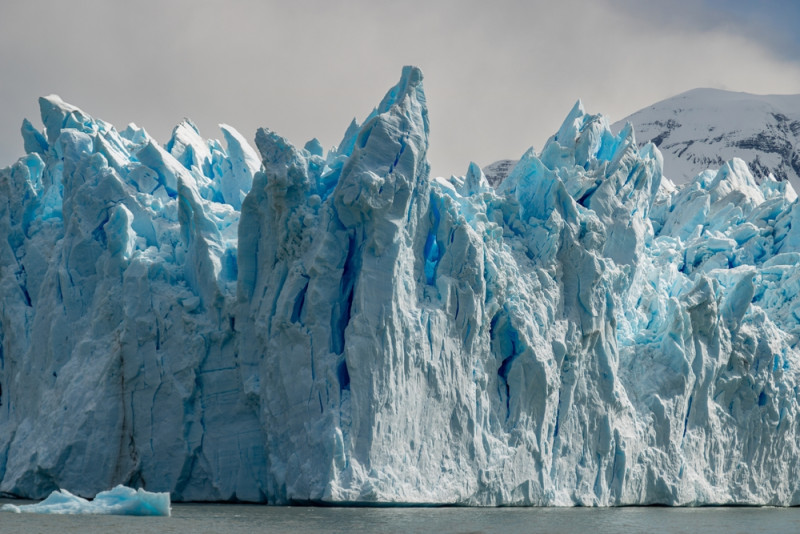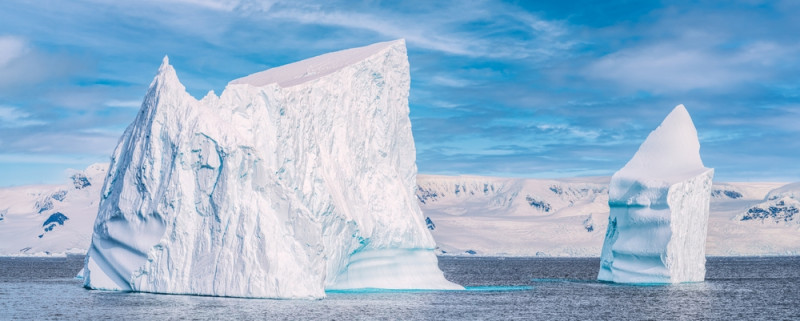More than half a billion years ago on a frozen land, glaciers changed the composition of the oceans and caused the complexity of life
More than half a billion years ago in a frozen, ice -covered land, glaciers changed the synthesis of the oceans and caused the complexity of life, depositing minerals in the ocean, according to a new study.
Inch to an inch, as huge glaciers were dragged on the frozen land to the sea, which was covered with ice, swept the ground beneath them, carving and scratching stones from the earth’s bark. When glaciers finally melted, released a torrent of land chemicals in the ocean, The researchers recently reported. The minerals drifted into land by this ‘Glaciers’ vacuum cleaner They changed maritime chemistry and threw the ocean nutrients that, as they say, may have shaped how complicated life has evolved.
This ancient period of deep freezing, known as Neoperzo -eraor Snowball Earth (Land of the avalanche), lasted from about 1 billion to 543 million years ago. During this time, the soil masses were consolidated in a superstitious Rhodine and then dissolved again. Earth’s first forms of life, such as germs, cyanobacteria, sponges and organisms that live in the bottom of the sea, lived in the oceans. After the end of Neoperozoic The rise of a more complex life came, with the first appearance of marine creatures with “armor”, shells and nail organisms.
Scientists have attributed this evolutionary explosion to increased levels of oxygen in the Earth’s atmosphere and the shallow ocean waters. And now, research published Tuesday in the magazine Geology shows that The flow of ancient glaciers may have directly shaped chemical changes in the ocean which were critical for the development of complex organizations.
Her study Snowball Earth offers a window on our planet’s past but also presents valuable knowledge of modern climate changesaid the lead author of the study Dr. Chris Kirkland.
“Our deep geological file shows how changing one part of the earth affects another”he said. At the moment, the dramatic heating of the planet that marks the human -fed climate crisis occurs at a dizzying speed compared to these ancient processes that lasted millions of years.
“This fast pace limits the ability of the Earth to naturally self -regulate, emphasizing the urgent need to deal with anthropogenic climate change.”
From “Snowball Earth” to “Greenhouse Planet”
The movement of glaciers, as it is known, has been exhausted and transported the land sediments to oceans, lakes and rivers, forming the basis of aquatic food tissues. However, the researchers studying the ancient earth were previously uncertain as to whether the neo -Russian glaciers moved at all, let alone moving enough to erode the ground beneath them and transport minerals into the sea.
“It was assumed that the extensive glacotal erosion of the continental interiors could be caused by her ice Snowball Earth‘said the CirklandProfessor at School of Earth and Planetary Sciences at Curtin University in Perth, Australia. “However, aspects of this idea were not clear, because the ice may not move or move slightly or even rolled.”
THE Cirkland and his associates found answers to Scotland and Northern Ireland, where they studied sediments from rock formations dating from Neoperozoic. The group examined the zircon – crystallized minerals that are extremely durable and can face extreme geological phenomena. Zirconia also contains celestial. By measuring the stages of the decomposition of uranium into zircon, geologists use minerals as timers to study the past of the Earth.
Researchers examined sediments dating from the time when the land was covered with ice and from its period ‘Land Greenhouse’ Millions of years later, when the ice had left, and found that the composition of its sediments of its sediments Snowball Earth It was dramatically different from that of later sediments.
“We recovered discreet patterns to the populations of these mineral granules”said the Cirkland to Cnn. “In essence, the” DNA “imprint of these sedimentary rocks has changed.”
Findings seem to reinforce the concept of active glacier ‘somewhat’, said Dr. Graham ShieldsProfessor of Geology at University College, London. Shields did not participate in the new research. However the study did not include data from a significant glaciers called Marinoanwhich marked the end of Snowball Earthhe said to Cnn. THE Shields He was also careful about the immediate connection of the erosion of glaciers with the evolution of complex life.
‘This connection has been suggested in the past but is controversial because the connection regarded rather than explained, ” said the Shields. “The dramatic landscape change that causes macroscopic animals is a thorough idea, but a case of glaciers’ erosion does not facilitate research.”
Mass thawing of glaciers transforms the oceans
The rocks from the time of her Snowball Earth They contained older minerals, but also presented a series of minerals of different ages, as the rocks were exposed and eroded over time since the scraping of glaciers. These elements have given scientists that his glaciers Neo -rhinetic They were mobile. The younger rocks, since the Snowball Earth It was thawed, they had a narrower range of minerals, and the most fragile granules were absent, suggesting that the flowing water had dissolved the material previously ground.
In the recession of Neoperozoicone of the known changes in ocean chemistry was the increase in uranium. Other studies had previously explained to the conclusion that this increase was the result of increasing atmospheric oxygen, “However, our data suggests that the delivery of chemicals to the oceans also played a role in it.”said the Kirkland.
“The” lost “dissolved ingredient in these rocks seems to be” emerging “in the changes in ocean chemistry right now.”he added. Mapping these changes to land and marine environments, “We depict the transfer of chemicals through the Earth as a system.”
Scientists reported that the most important glaciers’ moves took place at least twice between 720 and 635 million years ago. By the end of Neo -surroundedas the Earth’s frozen cover began to defrost, significant changes of chemistry occurred in the atmosphere and the oceans of the earth.
“The end of these glaciers is marked by rapid increases in atmospheric and oceanic oxygen, possibly due to enhanced erosion of exposed rocks and increased flow of nutrients in the ocean,” said the Cirkland. Such changes could have infused nutrient cycles and have given the emerging life the push needed to evolve into more complex forms.
‘The idea that the debris of glaciers from the time of his glaciers Neoperozoic provided nutrients to support the early evolution of animals has been a while. “said the Dr. Andrew Nall Emeritus Professor of Land and Planetary Sciences at Harvard University, who did not participate in the new research. However, there are questions about whether the minerals spilled into the ocean by the neo -rhinean Glacier would be enough to motivate long -term environmental changes with biological consequences, said the NOL to CNN.
Other studies have previously shown that the effects of glaciers’ changes, such as those described in the new study, “They could only have transient consequences – a dose of nutrients that increase primary production and may increase oxygen levels before relaxing back to the previous state of the environment,” said the NOL. New findings are ‘An interesting addition to the discussion’he added. “But the debate goes on.”
Lessons for today’s climate crisis
By the Neoperozoic To date, similar processes form climate change, including the role played by carbon dioxide (CO2) and the behavior of the feedback loops, when a process supplies an existing aspect of the Earth’s climate system and intensifies it. Ancient climate elements also illuminate what happens during climate overturning points – when a limit is exceeded, causing large -scale changes that are often irreversible.
Today, the land heats up quickly instead of gradually cooled Over time. It took millions of years for the glacier to overcome the planet during its phase Snowball Earthwhile modern heating accelerates in a few decades, ‘Much faster than previous physical climate change’, said the Cirkland.
However, global progress of climate change is still mapped by studying the interaction of CO2 accumulation, feedback loops and overturns, he added.
“We can see how different parts of the planet are connected through chemical bonds”he said. ‘Change a part of the system, other parts change’.
Source: Skai
I have worked as a journalist for over 10 years, and my work has been featured on many different news websites. I am also an author, and my work has been published in several books. I specialize in opinion writing, and I often write about current events and controversial topics. I am a very well-rounded writer, and I have a lot of experience in different areas of journalism. I am a very hard worker, and I am always willing to put in the extra effort to get the job done.












